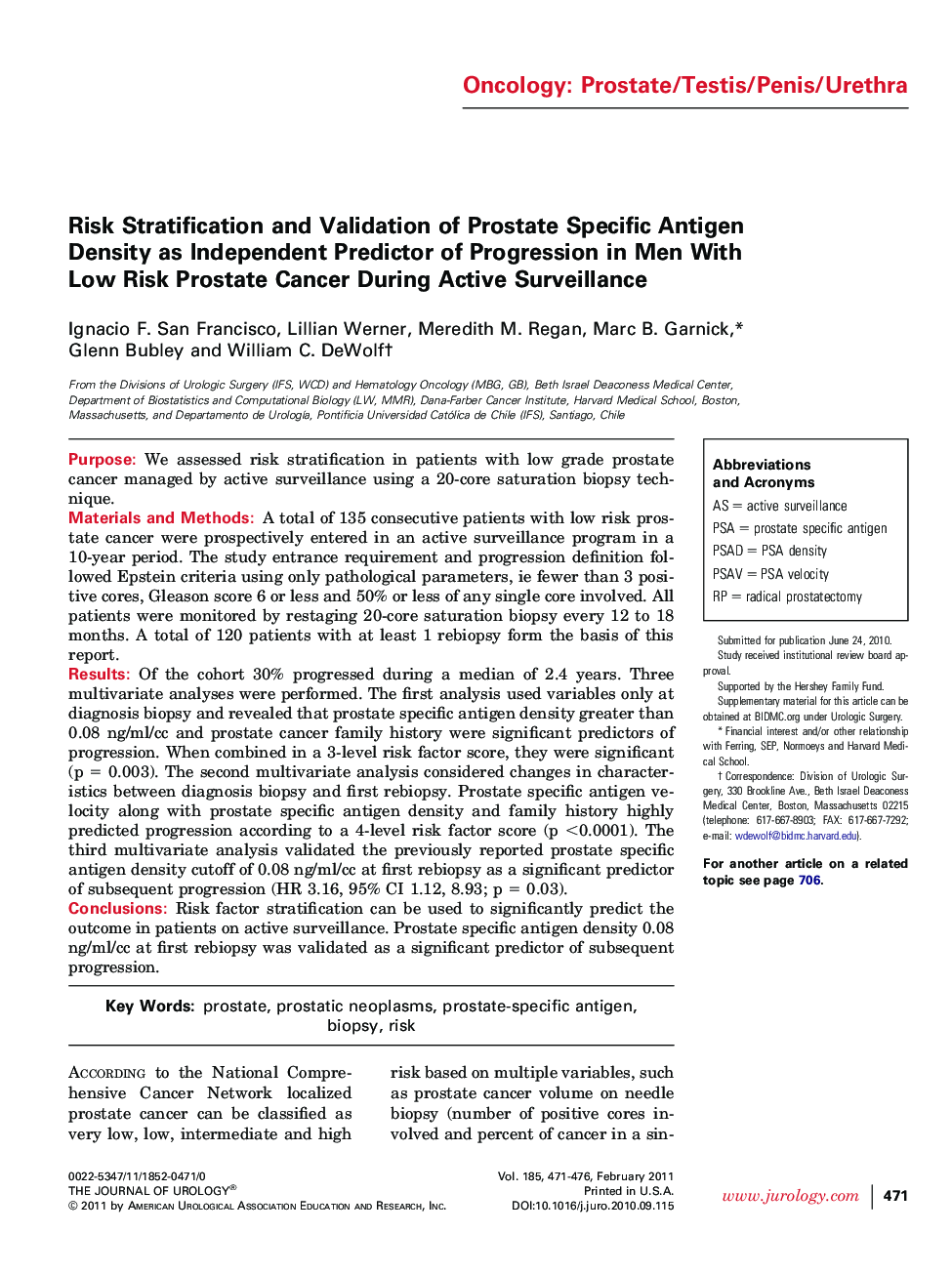| Article ID | Journal | Published Year | Pages | File Type |
|---|---|---|---|---|
| 3871222 | The Journal of Urology | 2011 | 6 Pages |
PurposeWe assessed risk stratification in patients with low grade prostate cancer managed by active surveillance using a 20-core saturation biopsy technique.Materials and MethodsA total of 135 consecutive patients with low risk prostate cancer were prospectively entered in an active surveillance program in a 10-year period. The study entrance requirement and progression definition followed Epstein criteria using only pathological parameters, ie fewer than 3 positive cores, Gleason score 6 or less and 50% or less of any single core involved. All patients were monitored by restaging 20-core saturation biopsy every 12 to 18 months. A total of 120 patients with at least 1 rebiopsy form the basis of this report.ResultsOf the cohort 30% progressed during a median of 2.4 years. Three multivariate analyses were performed. The first analysis used variables only at diagnosis biopsy and revealed that prostate specific antigen density greater than 0.08 ng/ml/cc and prostate cancer family history were significant predictors of progression. When combined in a 3-level risk factor score, they were significant (p = 0.003). The second multivariate analysis considered changes in characteristics between diagnosis biopsy and first rebiopsy. Prostate specific antigen velocity along with prostate specific antigen density and family history highly predicted progression according to a 4-level risk factor score (p <0.0001). The third multivariate analysis validated the previously reported prostate specific antigen density cutoff of 0.08 ng/ml/cc at first rebiopsy as a significant predictor of subsequent progression (HR 3.16, 95% CI 1.12, 8.93; p = 0.03).ConclusionsRisk factor stratification can be used to significantly predict the outcome in patients on active surveillance. Prostate specific antigen density 0.08 ng/ml/cc at first rebiopsy was validated as a significant predictor of subsequent progression.
